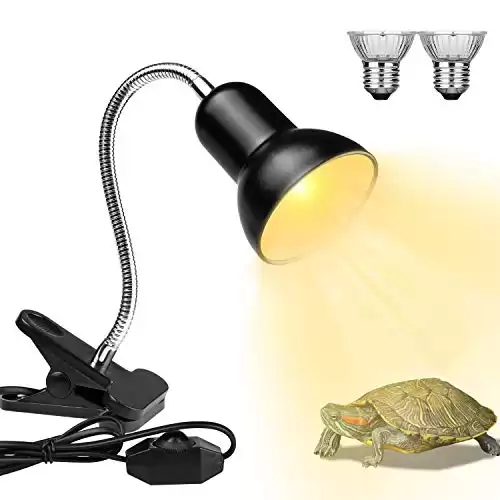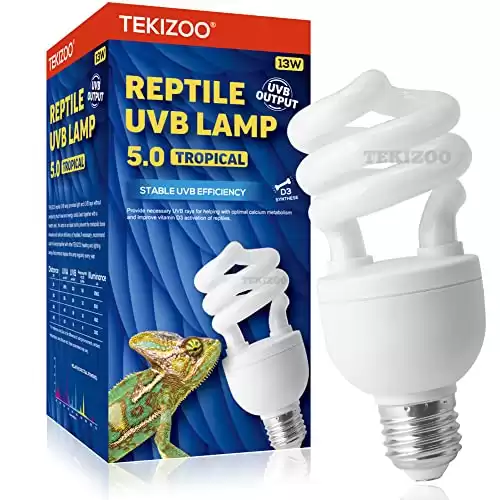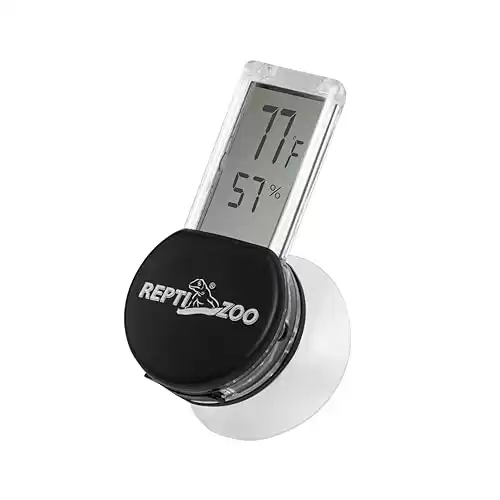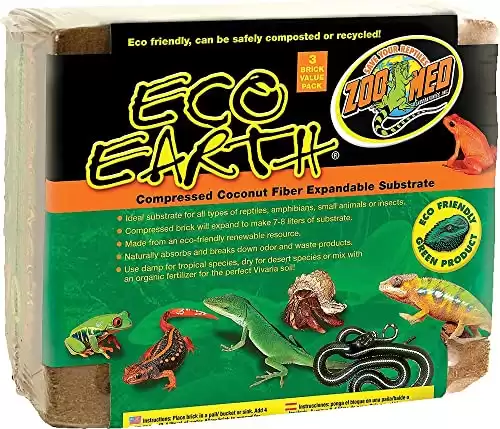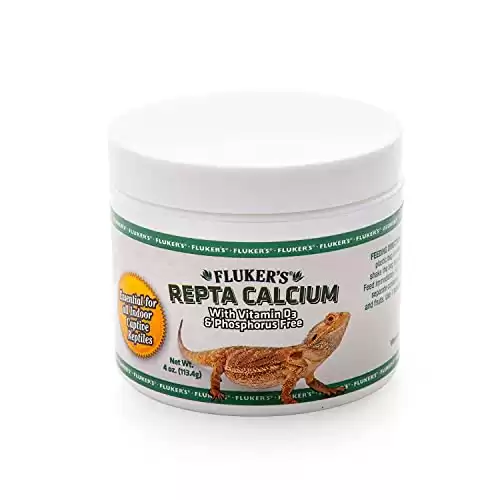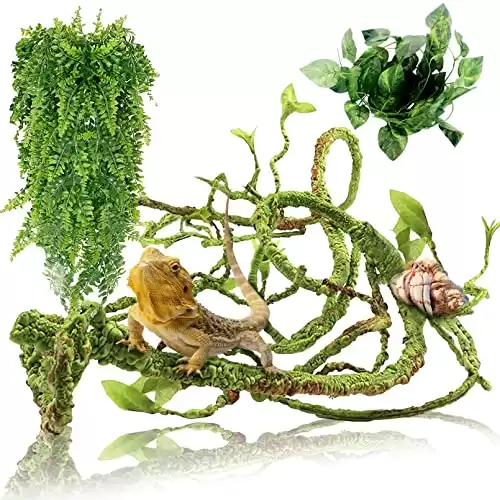The term “white leopard gecko” is used to describe leopard gecko morphs with an almost entirely white or pale appearance. These morphs are selectively bred for their unique appearance, and they often feature minimal patterning, if any at all, and a light skin color.
Whether you’re contemplating being a proud gecko parent or just need a refresher course, this post is for you!
Description of the White Leopard Gecko
Here’s a quick look into the features and behavior patterns of these adorable reptiles:
Characteristics
There’s no recognized subspecies or morph of leopard geckos known as the “white leopard gecko.” However, there are morphs and beautiful color variations of leopard geckos that exhibit white or near-white coloration.
Various morphs within the leopard gecko species may exhibit the following characteristics:
- White or Pale Coloration: These geckos typically have a light, nearly white, or pale background coloration on their skin.
- Reduced or Absent Patterning: A defining feature of many white leopard gecko morphs and may include minimal or no spots, stripes, or bands on their body.
- Eye Color: In many cases, their eyes may remain dark brown or black, which creates a rich contrast with their pale skin.
Subspecies
The white leopard gecko doesn’t have a subspecies. It’s a single morph of the leopard gecko that has been selectively bred to produce a white body color.
Yet, as you can see, there are a number of different morphs of the white leopard gecko with different varieties that have been bred for specific features, such as distinct eye traits and color patterns.
Color Morphs of White Leopard Geckos
As previously mentioned, the term “white leopard gecko” is informally used to describe leopard geckos with predominantly white coloration.
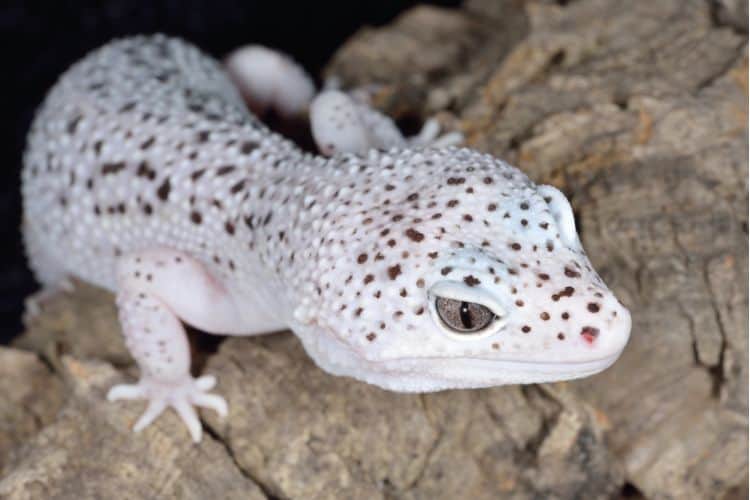
Basic Colors and Patterns
White leopard geckos generally have a white body with fewer spots and stripes than other leopard gecko morphs.
They’re also known to have bright high contrast colors with their white bodies creating a stark contrast with their dark spots and stripes. The intensity of the pale coloration may vary between individual geckos with slight variations within each morph.
Deep Orange Morphs
There’s no classification of geckos referred to as the “deep orange morph” of the white leopard gecko. However, various leopard gecko morphs exhibit deep orange or highly saturated orange coloration with a predominantly white or pale background.
These easy-going reptiles have become a popular choice not only for their dynamic colors but also because of their friendly personalities. Yet, keep in mind that they can be quite pricey.
Here are some morphs that might have deep orange coloration:
- Tangerine: Mostly bright orange on the head and body with a mix of orange and white with black spots on the tail.
- High Yellow: Best known for their intense yellow and orange coloration with reduced patterns.
- Carrot Tail: Feature a prominent tail that exhibits deep orange or reddish coloration and a white or pale body background.
- Radar: known for its deep orange coloration, particularly around the eyes and head, with light-colored bodies.
- Sunglow: A bright yellow or orange body color, Tremper albino pale-silverish-reddish eyes, and spotted white tails.
- Creamsicle: Feature a white body color with orange and yellow patterning, black eyes, and bright orange tails.
- Firewater: Combine the rich coloration of the high yellow morph, with a certain degree of carrot-tail with some geckos displaying light orange stripes or bands of another color.
Citrine Leopard Gecko Morphs
The citrine morph of the white leopard gecko is a relatively new morph that was first developed in 2019. It’s a cross between the white leopard gecko and the tremper albino leopard gecko and is characterized by its bright yellow to orange body color and pale-silverish-reddish eyes. The tails can be banded or spotted.
Captive Care for White Leopard Geckos
One of the perks of being a proud gecko parent is that they’re relatively low-maintenance and very easy to care for.
Housing Requirements
The following are a few necessities to consider when buying an enclosure for your pet gecko:
- A 10-gallon
terrarium is sufficient for one white leopard gecko, but a 20-gallon is ideal. - Place a secure screen on top to prevent the gecko from venturing out.
- Paper towels, paper bedding, reptile carpet, and soil all make great substrates. If you use sand it must be digestible sand.
- Keep temperatures between 75–85℉ during the day and 70–77℉ at night.
- Lightly mist the
terrarium daily to ensure humidity levels stay around 30–40%. - Place at least two hides in their
terrarium to help regulate their body temperature; one on the warm side of theterrarium and one on the cool side. - Set up a basking spot between 90–95℉ where they can warm up.
- A UVB lamp helps them synthesize vitamin D3.
- Always keep a shallow dish of fresh water in the
terrarium .
Diet and Health Care
White leopard geckos are insectivores, so a good diet should include a variety of insects, such as crickets, mealworms, and roaches.
It’s important to gut-load the insects before offering them as prey. This means feeding the insects a nutritious diet so they can pass on these nutrients to your gecko.
To keep your gecko in good health, check out these tips:
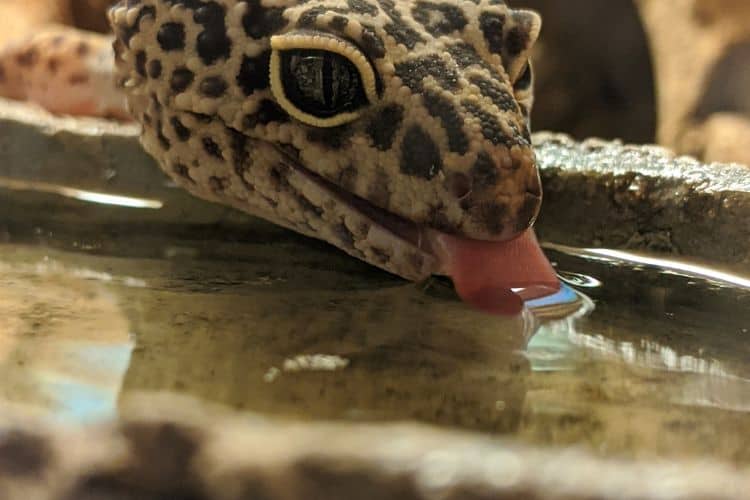
- Monitor your gecko’s weight and body condition.
- Make sure your gecko has access to fresh water at all times.
- Clean their
terrarium regularly. - Provide your gecko with a
heat lamp and a UVB lamp. - Supplement their diet with
calcium and vitamin D3. - Take your gecko for routine checkups.
Common Illnesses
White leopard geckos are prone to a few common illnesses, including:
- Metabolic bone disease (MBD)
- Impaction
- Dysecdysis
- Urinary tract infections (UTIs)
- Skin infections
Wild White Leopard Geckos
White leopard geckos don’t naturally occur in the wild because they’re a selectively bred morph of the leopard gecko.
If you’re interested in reading about how the common leopard gecko copes in the wild, scroll down.
Natural Habitat
The natural habitat of the leopard gecko is the rocky, dry grassland and desert regions of Afghanistan, Pakistan, northwest India, western Nepal, and some parts of Iran.
This hardy species has adapted to living in arid environments with sparse vegetation and sandy or clay soils. They’re often found in rocky crevices and other sheltered areas during the day and come out to hunt for food at night.
Diet and Behavior
Similar to their pet counterparts, leopard geckos in the wild are also nocturnal insectivores.
They’re solitary animals that spend most of their time hiding in rocks, logs, or other sheltered areas and come out at night to hunt for food.
Breeding Habits
Read about the leopard gecko’s breeding habits in the wild:
- The breeding season lasts from March to September.
- Females lay eggs in a sheltered location, such as under a rock or log.
- Females lay 1–5 eggs per clutch and may lay multiple clutches
- Eggs typically hatch after 35 to 89 days, depending on the temperature.
- Hatchlings are on their own from the moment they hatch.
In Conclusion
White leopard geckos are a beautiful and unique morph of the common leopard gecko. They’re relatively easy to care for and make great pets that can provide years of enjoyment for both beginners and experienced reptile keepers.
They’re usually bred in captivity. Still, be sure to do your research and find a reputable breeder before bringing one into your home.


